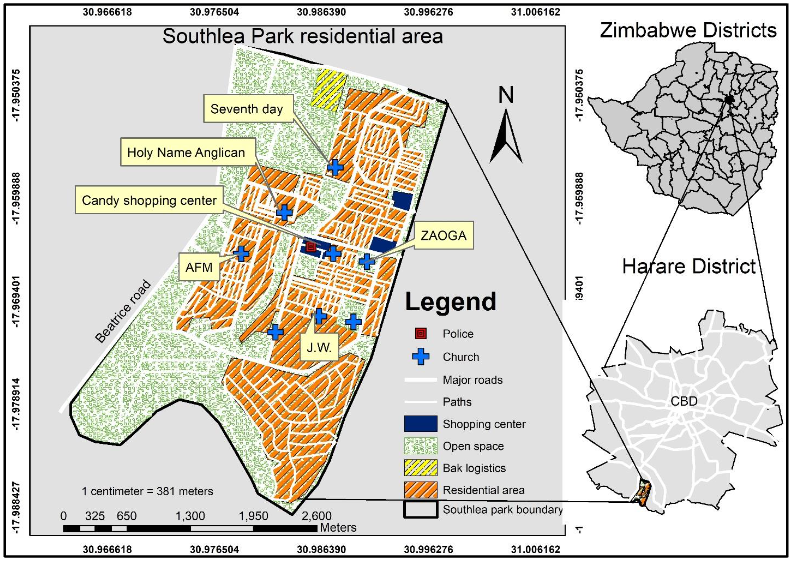Global Solutions & Outreach Programs: Humanity’s best chance to resolve global warming, Part 1: Global warming challenges
Abstract
In June 2024, the world’s largest standalone public opinion poll covering 77 countries, Peoples’ Climate Vote 2024, reported that “89% of people [want] to see more climate action from their governments”. That is all well and good. However, how are policymakers being informed on the viability of climate solutions? Policymakers are typically not engineers or scientists. They must rely on others for advice. Many who provide that advice are influenced by four types of bias: Corporate vested interests, career vested interests, public passions, and political agendas. In combination with business-as-usual, these biases are destroying humanity’s chances of resolving global warming. They are detrimentally affecting current global projects to resolve global warming. To mitigate these biases, the Global Solutions and Outreach Programs (GSOP) proposal will be undertaken by multiple teams of engineers, economists, social experts, and policy experts within each country, using a Wicked-Problem Approach. This work will be done outside of, yet informing, governments, the marketplace, and public opinion. Country action plans will be rolled up to regional and global levels. The GSOP work will be iterated until the global action plan provides a resolution of global warming at the scale of Earth. Part 1 describes the challenges we face and a problem-solving approach to resolving it. Part 2 will describe our GSOP proposal using that approach.
References
[1]Rittel HWJ, Webber MM. Dilemmas in a general theory of planning. Policy Sciences. 1973; 4: 155–169.
[2]Hutchinson RW, English SL, Mughal MA. A general problem solving approach for wicked problems: Theory and application to chemical weapons verification and biological terrorism. Group Decision and Negotiation. 2002; 11: 257–279.
[3]Tomkinson B, Engel C, Tomkinson R. Dealing with wicked global problems: An inter-disciplinary approach. Collected Essays on Learning and Teaching. 2009; 2.
[4]Levin K, Cashore B, Bernstein S, Auld G. Overcoming the tragedy of super wicked problems: Constraining our future selves to ameliorate global climate change. Policy Sciences. 2012; 45: 123–152.
[5]Edmondson AC. Wicked-Problem Solvers: Lessons from successful cross-industry teams. Harvard Business Review. 2016.
[6]Hutchinson D, Smith Jr. D. People’s Assessment of Global Warming, Plus Adaptations for Advancement and Survival. Independently published; 2019.
[7]Bentley J, Toth M. Exploring Wicked Problems: What they are and why they are important. Archway Publishing; 2020.
[8]DiPerna P. Pricing the Priceless. John Wiley & Sons; 2023.
[9]Energy Transitions Commission. Fossil fuels in transition: Committing to the phase-down of all fossil fuels. Available online: https://www.energy-transitions.org/publications/fossil-fuels-in-transition/ (accessed on 2 February 2025).
[10]Available online: https://unfccc.int/process/bodies/supreme-bodies/conference-of-the-parties-cop (accessed on 2 February 2025).
[11]UNFCCC. Available online: https://unfccc.int/ (accessed on 2 February 2025).
[12]Paris Agreement. Available online: https://unfccc.int/sites/default/files/english_paris_agreement.pdf (accessed on 2 February 2025).
[13]National Academies of Sciences, Engineering, and Medicine (NASEM). Climate Conversations: COP28. Available online: https://www.nationalacademies.org/event/41711_01-2024_climate-conversations-cop28 (accessed on 2 February 2025).
[14]Deep Decarbonization Pathways Project. Available online: https://ddpinitiative.org/ (accessed on 5 February 2025).
[15]Statista Research Department. Global crude oil demand 2005–2024. Statista Research Department; 2024.
[16]Krumdieck S. Transition Engineering: Building a Sustainable Future. CRC Press; 2020.
[17]Oil 2024: Analysis and forecast to 2030. Available online: https://iea.blob.core.windows.net/assets/493a4f1b-c0a8-4bfc-be7b-b9c0761a3e5e/Oil2024.pdf (accessed on 5 February 2025).
[18]Hawken P. Drawdown: The Most Comprehensive Plan Ever Proposed to Reverse Global Warming. Penguin Books; 2017.
[19]Available online: https://drawdown.org/ (accessed on 5 February 2025).
[20]Net Zero by 2050: A Roadmap for the Global Energy Sector. Available online: https://iea.blob.core.windows.net/assets/deebef5d-0c34-4539-9d0c-10b13d840027/NetZeroby2050-ARoadmapfortheGlobalEnergySector_CORR.pdf (accessed on 7 February 2025).
[21]Installed electricity capacity worldwide in 2022, by source. Available online: https://www.statista.com/statistics/267358/world-installed-power-capacity/ (accessed on 3 January 2025).
[22]Renewables 2023: Analysis and forecasts to 2028. Available online: https://iea.blob.core.windows.net/assets/96d66a8b-d502-476b-ba94-54ffda84cf72/Renewables_2023.pdf (accessed on 7 February 2025).
[23]International Energy Agency. The role of critical minerals in clean energy transitions. Available online: https://iea.blob.core.windows.net/assets/ffd2a83b-8c30-4e9d-980a-52b6d9a86fdc/TheRoleofCriticalMineralsinCleanEnergyTransitions.pdf (accessed on 7 February 2025).
[24]World Nuclear Association. Supply of Uranium. Available online: https://world-nuclear.org/information-library/nuclear-fuel-cycle/uranium-resources/supply-of-uranium (accessed on 7 February 2025).
[25]Michaux S. Available online: https://www.thegreatsimplification.com/episode/19-simon-michaux (accessed on 9 February 2025).
[26]Giraud G. Extreme Climate Risks and Financial Tipping Points, UT Energy Symposium. Available online: https://energy.utexas.edu/events/extreme-climate-risks-and-financial-tipping-points (accessed on 9 February 2025).
[27]Haine A. McKinsey: Net-zero transition will cost $275 trillion globally by 2050. The National; 2022.
[28]Climate Bonds Initiative. Available online: https://www.climatebonds.net/ (accessed on 9 February 2025).
[29]United Nations. 24 billion tons of fertile land lost every year, warns UN chief on World Day to Combat Desertification. Available online: https://news.un.org/en/story/2019/06/1040561 (accessed on 9 February 2025).
[30]Scharping S. Agricultural lands are losing topsoil—Here’s how bad it could get. Eos; 2024.
[31]Charles D. New evidence shows fertile soil gone from midwestern farms. NPR; 2021.
[32]Masterson V. What is regenerative agriculture? World Economic Forum; 2022.
[33]Permaculture Practice. Available online: https://permaculturepractice.com/what-is-permaculture/ (accessed on 3 January 2025).
[34]2048: When will fish go extinct? Available online: https://www.theworldcounts.com/challenges/planet-earth/oceans/overfishing-statistics (accessed on 9 February 2025).
[35]Gramling C. Will stashing more CO2 in the ocean help slow climate change? ScienceNews; 2024.
[36]United Nations. Available online: https://www.un.org/en/climatechange/science/climate-issues/biodiversity (accessed on 9 February 2025).
[37]Lindwall C. Climate tipping points are closer than once thought. NRDC; 2022.
[38]Senge PM. The Fifth Discipline, The Ard & Practice of the Learning Organization. Doubleday; 1990.
[39]Adaptive Governance: An introduction, and implications for public policy. Available online: https://core.ac.uk/download/pdf/6418177.pdf (accessed on 9 February 2025).
Copyright (c) 2025 Author(s)

This work is licensed under a Creative Commons Attribution 4.0 International License.
Authors contributing to this journal agree to publish their articles under the Creative Commons Attribution 4.0 International License, allowing third parties to share their work (copy, distribute, transmit) and to adapt it for any purpose, even commercially, under the condition that the authors are given credit. With this license, authors hold the copyright.










